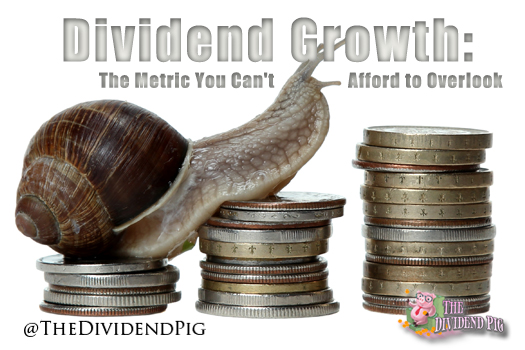When it comes to the best investment strategies, does maximizing your return on investment as quickly as possible matter more than long-term gains? Do you consider dividend growth rates? How about this: if you had to choose between investing in a company offering average, yet consistent returns year-after-year and hot tech company whose historical returns graph looks like it went on a wild roller coaster ride, which option would you choose?
If you prefer taking a long-term perspective on your investment portfolio by prioritizing dividend growth instead of frantically trying to score huge gains on your investments, then you likely have at least a decent understanding of why dividend growth is so important.
How often do you analyze the average dividend growth rate for stocks in your portfolio? You could be missing out on valuable opportunities for higher returns on your investments in the long run if you continuously overlook this crucial metric, so let’s explore why dividend growth matters so much for dividend investing.
What is Dividend Growth?
The concept of dividend growth refers to the annualized percentage growth rate of a stock’s dividend over the course of one to several years. Although it’s extremely important for investors of all levels, income and backgrounds to know how to calculate the dividend growth rate of a stock, this metric is frequently disregarded in favor of simpler metrics, like dividend yields.
At this point, you might be wondering: why do so many people ignore dividend growth rate if it’s so important? The problem lies in short vs. long-term investment decisions; many investors opt for higher-risk investments with quick opportunities for sizable gains, rather than going deeper with their stock analyses to determine if the current yield percentage is likely to hold up over time.
Why Does Dividend Growth Matter More than Dividend Yield?
This short- vs. long-term conundrum leads to another complex question: why does the dividend growth rate (historical and projected) matter more than the current dividend yield? All too often, investors flock to dividend traps, which offer substantial – but unsustainable – dividend yields that will likely face a reduction in the near future.
If you only analyze a stock’s current yield rate, then you risk overlooking critical problems in the company’s history of paying out dividends to shareholders (and potential cutting of dividends or eliminating them altogether in some cases). Generally speaking, companies with proven track records of steadily increasing dividend payouts for their shareholders are more likely to continue this trend in comparison to companies that are currently paying higher dividend rates but previously had to cut dividends (multiple times, in some cases).
For these reasons, the dividend growth metric should always be factored into any decision you make about whether or not you should invest in a certain company.
How Do You Calculate the Dividend Growth Rate?
Calculating and/or analyzing the dividend growth rate of a stock sounds more complicated than it actually is – in fact, you can generally find the history of a company’s dividend rates on any website that displays stock quotes. To calculate the dividend growth rate, you can use an online dividend calculator (seekingalpha.com provides all this data for free), perform the calculations on paper or even use Excel.
Here’s a hypothetical example to give you an idea of how this all works:
2010: $1.00
2011: $1.08
2012: $1.24
From 2010 to 2011, the dividend payout grew by 8% (1.08-1.00 = .08/1.00 = 8%). Between 2011 and 2012, the dividend payout grew by $0.16 (1.24-1.08 = .16/1.08 = 14.8%). This is a 24% (1.24-1.00 = .24/1.00= 24%) difference from 2010 levels but only a 14.81% difference from 2011 levels).
In this scenario, the growth rate between 2010 and 2012, the average growth rate over the course of 2 years was 12% (24%/2 = 12%). This may not seem like a significant change from the 8% growth rate between 2010 and 2011, but this certainly demonstrates why you want to look at the dividend growth rate over time instead of focusing primarily on the current dividend yield. These dividend increases add up quickly overtime!
Final Thoughts on Dividend Growth
There is no perfect, universal solution for maximizing your income from dividends, but incorporating the dividend growth calculation into your analyses before picking new stocks is undoubtedly a good strategy. Of course, it must be said that even companies with consistent dividend payouts could be vulnerable to market changes and other unpredictable factors that lead to dividend cuts.
However, the dividend growth rate is still a great way to assess a company’s financial practices and track record of appeasing to shareholders by avoiding dividend cuts at all costs. Be sure to consider this crucial metric the next time you have to decide between different stocks to add to your portfolio – doing so could help you maximize your returns as long as you maintain a long-term perspective on your dividend portfolio’s performance.


Comments are closed.